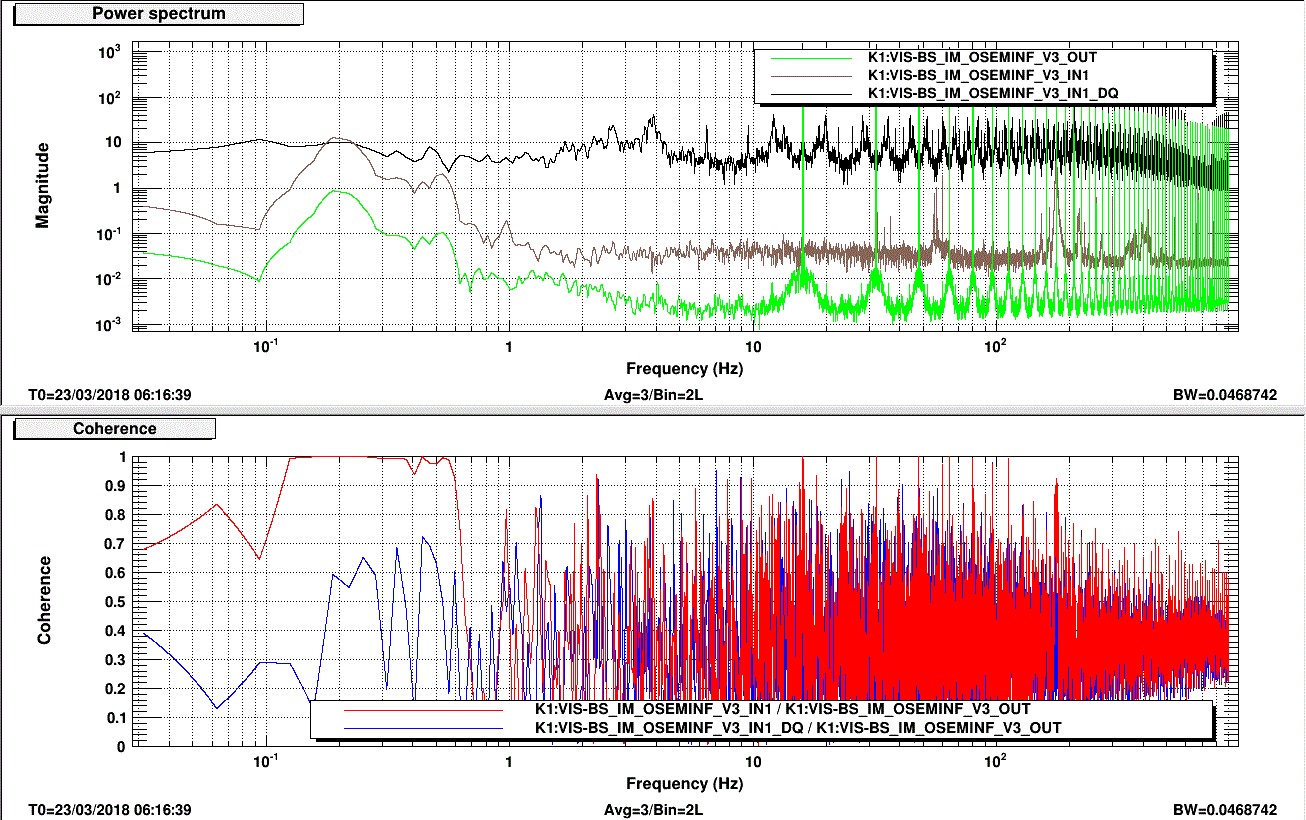Thanks for tackling this. Note that the matrix elements used are derived in T1707205. They're not expected to be symmetrical. They contain lever-arm information, so that if the output of the OSEMINF block is flag positions in µm, the output of OSEM2EUL should be in µm and µrad. The EUL2OSEM matrix is supposed to be the transpose of OSEM2EUL (this is the convention used at LIGO but note that Type Bp used a different, simpler convention).
We found that the strange spectrum is caused by the DQ system, not OSEM itself!
See attached figure of spectra. Even though **_IN1 and **_IN1_DQ are supposed to be the same, the spectra look very different.
And There is no coherence between IN1 and IN1_DQ.

Also, we could find sharp line noises at OUT signals, even though we have just anti-dewhitening filter and gain filter between the IN1 and OUT. These line noise is also observed at other signals.
Hey Shoda-san,
The fact that the OUT signals are suffering from some line noise makes me think this is not only an issue of the data acquisition system, but also some data processing issues in the real time model.
Can someone check whether the realtime model is healthy or not?
If this distorsion in the OUT signals is real, none of our control loops are healthy, including the BS optical lever loop which has been recently acting up (4520).
I fixed this problem by restarting k1visbs.
At the beginnig, CFC in STATEWORD was turnd yellow,
DC status becomes "0x2000",
and the message "Modified File Detected" was displayed on DAQ LOAD(see attachement 1).
This means the real-time model is not rebooted after someone executed "make install-k1xxx".
So installed channel list is conflict with one used by a running model.
The spectra of *_IN1 and *_IN1_DAQ looks like same behavior (see attachement 2).
The harmonics of 16Hz also disppears.
Please check whether the problem is resolved.
= Now oplev loop for BS is properly working =
After the fix reported here (4533), I checked the behavior of the oplev loop of BS and found it is working.
It is working properly for more than 30 mins.
Procedure of turning on the filter was:
1. adjust offset in BS_TM_OPLEV_SERVO_{P|Y} so that the output of the filter will be small
2. press CLEAR HISTORY buttons
3. turn them on
This is probably due to restarting k1visbs (4533), though this fix should be related only to DAQ system.
I forgot to write down the 4th step:
4. got the offsets gradually back to the original values so that we can set BS angle to the target.


